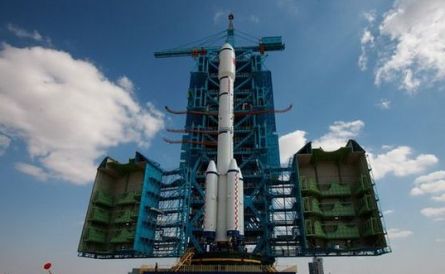China successfully launched the first segment of its space station, Tiangong-1, on 29 September. The Tiangong spacecraft was launched atop a Long March II-F from the Jiuquan Space Centre in the Gobi Desert of Western China.
Tiangong, a technology test bed for what China hopes will be the central module of a permanent space station, is scheduled to stay in orbit for two years. During its time aloft it will be visited by an unmanned Shenzhou capsule, followed by two manned capsules.
The 29 September launch marks the latest in a series of notable achievements, and makes China only the third nation (behind the US and Russia) to launch a capsule capable of long-term habitation.
China has long planned to have the first parts of a new space station in orbit and manned by 2020, the same year that the International Space Station is due to be deactivated and deorbited.
 |
|---|
©China Manned Space Engineering office |
Source: Flight International


























